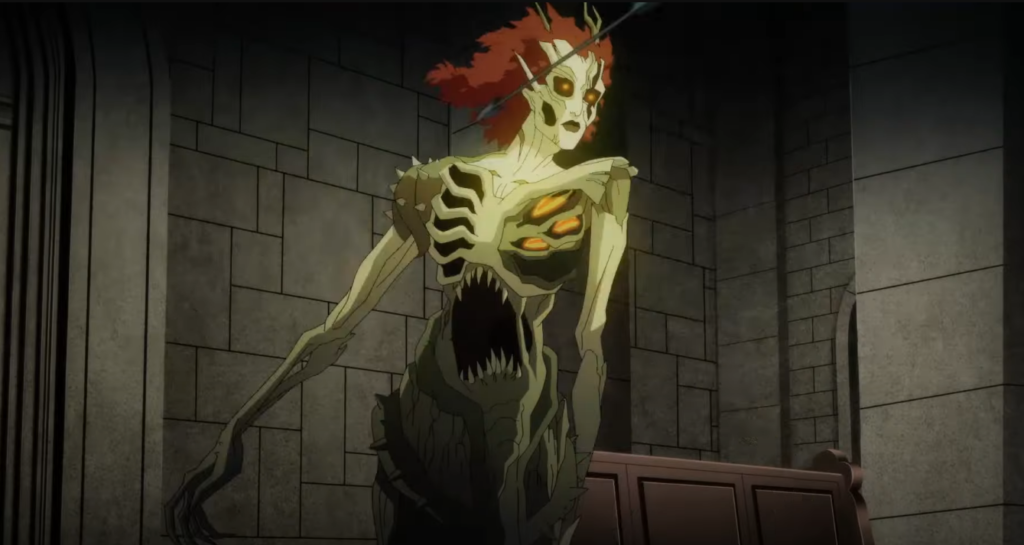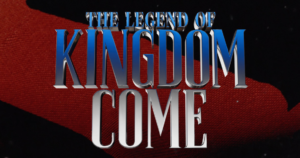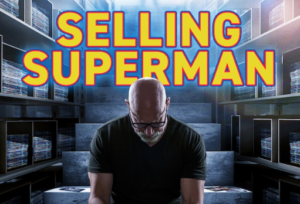FILM REVIEW: Batman: The Doom That Came To Gotham
It’s Batman vs. monsters during the Roaring 20’s in Batman: The Doom That Came to Gotham, what’s not to love? What could be a Hellboy story works just as well as a Batman story. The whole reason why we love Elseworlds is to see different, sometimes seemingly out-of-pocket takes on characters we’re all too familiar with. This one may be the most niche and one of the most entertaining.
Batman: The Doom That Came To Gotham is the latest movie in the long line of original DC animated films is an Elseworlds tale that shows why the imprint was such an amazing thing. Characters like Superman and Batman are so timeless that they can be placed anywhere. In 2001, Hellboy creator Mike Mignola penned Batman: The Doom That Came to Gotham – a 1920s Dark Knight adventure ripe with Lovecraftian antagonists and influence. Now, we have an extremely faithful adaption to the three-issue miniseries.
Lovecraftian refers to the genre created by horror writer H.P. Lovecraft known for his post-mortem success with his Cthulhu Mythos. These stories often featured fish-like monsters, enormous alien gods, ancient civilizations, and the overall theme of insanity. Some even delve into the creation of humanity and the universe. Mignola would list Lovecraft when he was creating Hellboy, so Batman: The Doom That Came to Gotham fits right into his library. Even though they make look similar, it’s not the same continuity as Batman Gotham by Gaslight which takes place several decades prior and in England.

Bruce Wayne (David Guintoli) has stepped away from the Batman mantle for a couple of decades to travel the world and along the way has picked up wards, Dick Grayson (Jason Marsden), Jay Tawde (Karan Brar), and Kai Li Cain (Tati Gabrielle). On their travels in Antarctica, they investigate the doomed expedition of Oswald Cobblepot (William Salyers) where some dark magic appears to be at work infecting all the local penguins. But, there’s something else in the ice fields that Cobblepot and his crew discovered.
What follows is his return to Gotham and the mantle of Batman after so long. But he’s not tackling crime, he’s jumping right into the supernatural world that has always existed not parallel but within our own. With the help from Jason Blood /Demon Etrigan (Matthew Waterson), Knight Templar Oliver Queen (Christopher Gorham), and Commissioner Gordon (John DiMaggio), Bruce tackles twisted versions of his rogues like Poison Ivy, Killer Croc, and Two-Face all while uncovering the mystery of the “Lurker” and its dark ties to the world and Gotham City.
In Elseworlds, character development comes second in terms of readers’ interest. We like this story because it shows just how flexible our favorite characters can be in vastly different settings. It really shines here in the 1920s pulp setting when Lovecraft was writing his stories. Lovecraftian horror is all about body horror, twisting shapes that induce madness because they simply can’t be understood, and vast cosmic implications. Batman: The Doom That Came to Gotham understands this and knows this is what the audience came for. Even the doomed arctic expedition is a reference to one of his stories – At The Mountains of Madness.

Guintoli voiced Bruce before in Batman Soul of The Dragon and it almost feels like the same Bruce save that he seems wiser and older. The whole movie is a supernatural mystery, so there’s no character arc. Rather, it’s character motifs. Another theme of Lovecraftian stories is fear, which is something synonymous with Batman. Funny enough, Arkham Asylum is an actual set that was created by Lovecraft in his many stories. It’s truly amazing how much these two concepts connect and that’s all down to Director, Sam Liu and his vision for the film.
Of course, Batman doesn’t run and hide in the face of anything scary so that means there naturally have to fight scenes. The art style doesn’t stray too far from that being used in the main DC animated universe. In fact, the style and animation here closely resemble Superman: Red Son, another Elseworlds story. This art and animation continue to allow for great battle choreography and it’s not too often that we see Batman go hand-to-hand with literal monsters when he’s not fighting Killer Croc or Clayface.

Stefan L. Smith has scored movies such as Us and Nope. Suspenseful music dominated by a crescendo violin that gradually becomes a screech is perfect for the flashing imagery meant to represent glimpses of madness. If Lovecraft’s books had visuals and sound, they would be something like this. He’s no stranger to crafting good superhero fight music either, having also scored Spider-Man No Way Home.
While Batman’s 20’s suit doesn’t go above and beyond as it looks too much like the one from Gotham by Gaslight, the monster and villain designs absolutely do. We’ve seen horror takes on characters like Killer Croc be drawn and made into figures, but never in animation. There’s plenty of explosive magical action that could be right out of the pages of Justice League Dark. Magical tomes, summons, and more all abound.
It’s Batman vs. monsters during the Roaring 20’s in Batman: The Doom That Came to Gotham, what’s not to love? What could be a Hellboy story works just as well as a Batman story. The whole reason why we love Elseworlds is to see different, sometimes seemingly out-of-pocket takes on characters we’re all too familiar with. This one may be the most niche and one of the most entertaining.








2 thoughts on “FILM REVIEW: Batman: The Doom That Came To Gotham”